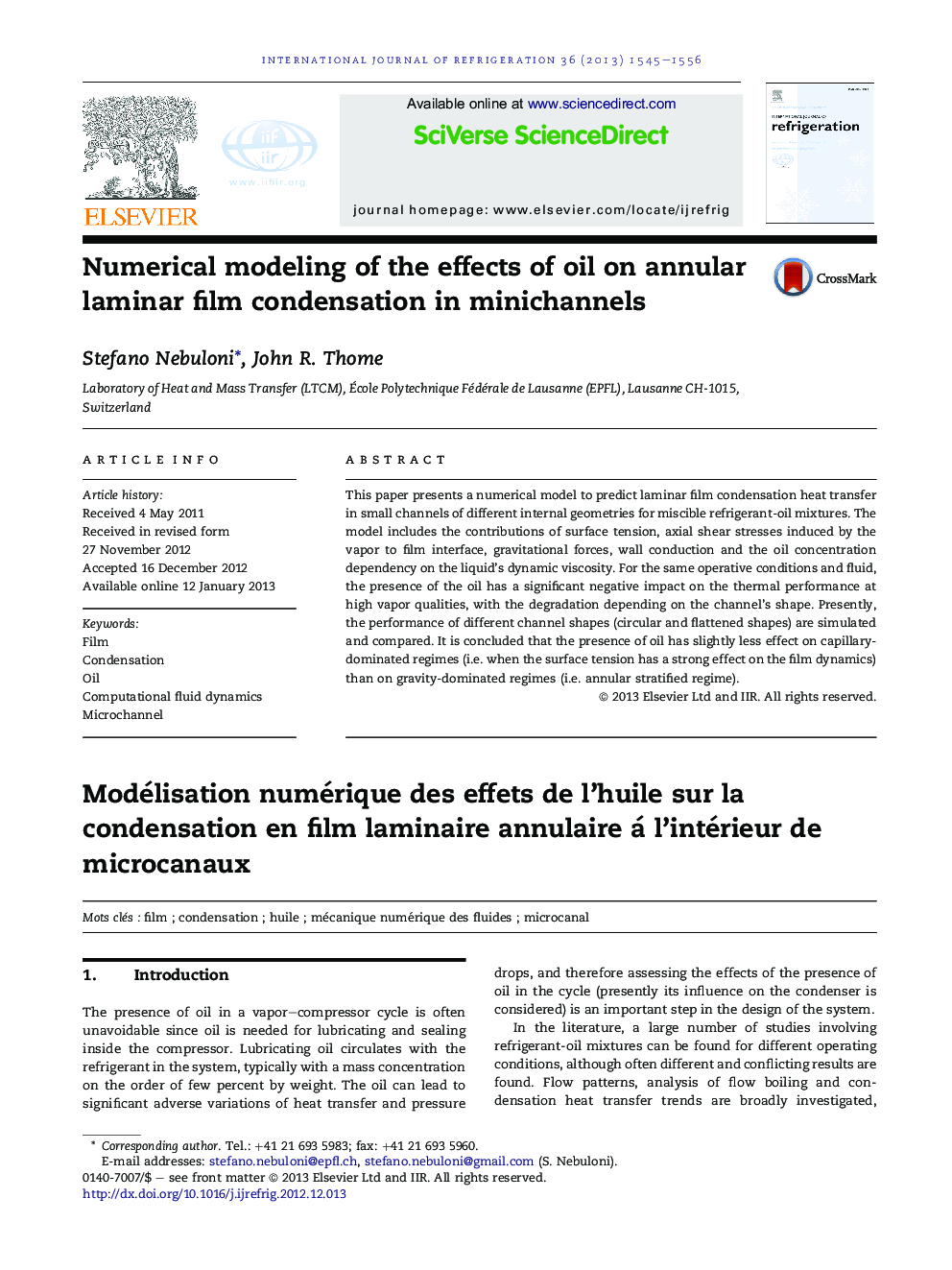| Article ID | Journal | Published Year | Pages | File Type |
|---|---|---|---|---|
| 786945 | International Journal of Refrigeration | 2013 | 12 Pages |
This paper presents a numerical model to predict laminar film condensation heat transfer in small channels of different internal geometries for miscible refrigerant-oil mixtures. The model includes the contributions of surface tension, axial shear stresses induced by the vapor to film interface, gravitational forces, wall conduction and the oil concentration dependency on the liquid's dynamic viscosity. For the same operative conditions and fluid, the presence of the oil has a significant negative impact on the thermal performance at high vapor qualities, with the degradation depending on the channel's shape. Presently, the performance of different channel shapes (circular and flattened shapes) are simulated and compared. It is concluded that the presence of oil has slightly less effect on capillary-dominated regimes (i.e. when the surface tension has a strong effect on the film dynamics) than on gravity-dominated regimes (i.e. annular stratified regime).
► We present a numerical model to predict annular film condensation heat transfer and pressure drop in presence of miscible oil. ► The presence of oil mainly alters the liquid phase dynamic viscosity. ► Mean and local heat transfer coefficients are highly penalized by the increased liquid viscosity. ► Mean and local frictional pressure drops significantly increase. ► Different channel shapes presents different levels of response to the oil presence.
